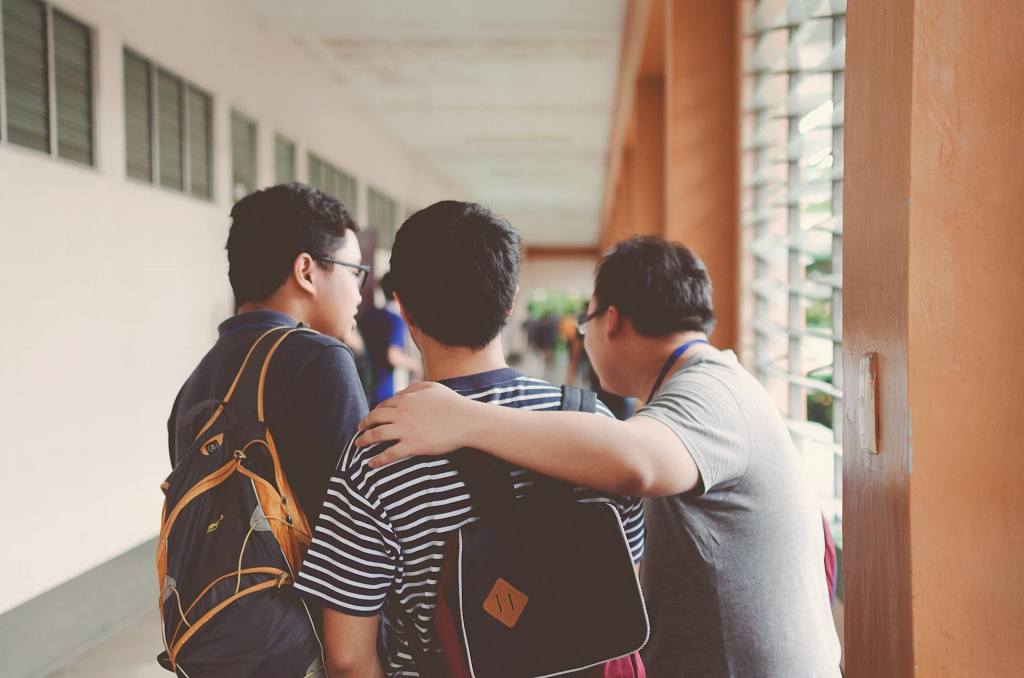
A deputy head walked into one of our Mindful Leadership courses for headteachers and school leadership teams last year looking as if he had the weight of the world on his shoulders.
When we checked in, he said that he was struggling. This was his first deputy headship and he wanted to do a good job, but he thought listening to staff was important while the head liked to isolate them. He had two young daughters at home and felt he didn’t have enough time or energy for them. He thought he was failing at life and he kept ruminating – overthinking it all.
As he spoke, you could feel the empathy from the other school leaders in the room. His story resonated with theirs. When he finished speaking, I said, “I think this course is really going to help you,’ and he looked hopeful. I meant every word that I said.
How can training in mindfulness help an already busy school leader? Firstly, mindfulness helps us be present. We may think that school leaders need to have presence, to be charismatic. But that’s not the same as being present in the sense of giving your full attention to what’s in front of you. Perhaps you agree that listening to staff members is important, but it’s challenging to take someone else in when you have a thousand other things on your to-do list.
Cathy Paine, CEO of the Reach2 Academy Chain, said at the Mindfulness in Schools Conference in 2018: ‘The minds of school leaders, in particular, are scattered by what they’ve had to leave behind to be there, what their smartphone and tablet want to continue to engage them with while they are there and what they have waiting for them when they get back.’
It’s no wonder that school leaders are focused on getting on with it in the hope that somewhere, somewhen they will get on top of things. Attending a mindfulness course – which means more time out – can seem like a distraction. But in mindfulness, we call this operating on autopilot; the ability to keep going in a very rudimentary and automated way. Autopilot works well for things like driving; it helps that you don’t have to remember to do ‘mirror, signal, manoeuvre’ as you did when you were learning to drive.
But schools aren’t machines. They’re communities. They involve real people who can be complex and unpredictable. Living on autopilot feels mechanical and joyless. So how do you step into a way of being in which you’re fully present with your staff and pupils?
Pausing for presence
Mindfulness is the skill of becoming aware, present and in the moment. That lets you calm down, step back and regain perspective. It’s a shift from a mode when we’re ‘thinking’ about what’s happening to one in which we’re noticing the world around us, our bodies and our emotions – a ‘sensing mode’. It can involve focusing on breathing, but it doesn’t have to. It’s a way of ’pausing for presence.’
‘I try to encourage school leaders to be where they are.’
Cathy Paine
We’re often worrying about the past or feeling anxious and anticipating the future. In a busy environment like a school, the present moment is easily squeezed out. Yet every future event stems from the present moment and the ability to pause, take a breath, respond and take in the good – like a smile from a pupil or a kind word from a colleague.
The recent Wellcome Trust-funded MYRIAD research trial showed evidence that schools engaging with mindfulness become more positive and kinder working environments. An experienced headteacher practising mindfulness said, ‘I have practised active listening and I think I have already improved my work. I feel more present, more empathetic. It’s less about me. These skills are really needed if we are to ‘live’ our values.”
Of course, none of this is easy in a sector that has been hit by the pandemic, budget cuts, mental health crises and student absences. However, it is possible to shift the attitudes of both staff and leaders. One new headteacher said, ‘I need to take time to process things. I understand that you can’t pour from an empty cup.’
Creating the weather in the classroom
School staff ‘create the weather in the classroom’. We make the atmosphere and the mood.
Neuroscience shows that we are social, emotional beings that are constantly picking up cues from each other, including nonverbal ones. If school staff are stressed and reactive, that’s communicated to the nervous systems of the young people around them. If staff can pause, be thoughtful and respond, that communicates a sense of safety and spaciousness to the students. When there’s an atmosphere of curiosity in the room, pupils often feel more willing to expose what they don’t know, taking the risk that helps them learn.

Research shows that school staff who practice mindfulness create more calm and focused learning environments. ‘My approach is calmer and more restorative,’ commented one secondary head of year after trying mindfulness. ‘I’m not reacting to situations in a stressed and annoyed way anymore. And I’m happier at home.’
If we create the weather in the classroom, how do we manage the weather in our minds? In a frantic environment like a school, it’s tempting to rush through the day on autopilot. But taking a few moments to check in with ourselves, feeling our feet on the floor and taking a few breaths can pay off. It makes a difference just to ask: ‘What’s my internal weather right now? Is it sunny or rainy, dull or bright?’ Just acknowledging that in a light way can help us know what to do next.
‘I feel more grounded,’ said a science teacher. ‘I don’t have to take external factors to heart. I am enough.’
Breaking up is never easy
The school day is full of transitions: from meetings to teaching, from teaching to yard supervision, and on it goes. One of the biggest transitions is from the school day to going home. Many staff tell me they have trouble ‘switching off’, as if all we need to be ‘switched on’ for is work and home life doesn’t have the same value.
I prefer to call it ‘switching gear’. It’s important that what you do after school equal weight to what you do in school, whether that’s spending time with family or a pet, engaging in a hobby, exercising or whatever else you enjoy doing. As autopilot tends to set the pace, it can seem easier to keep going, checking emails and chatting on WhatsApp groups about school-related things – the result of which is that you feel you never get a break.
It’s so much better when we choose what we do with our time. Psychologist Marie Asberg, an expert on burnout who often talks about the exhaustion funnel, says that when work is stressful (which, let’s face it, is much of the time in school), we tend to cut out the things that bring us pleasure like hobbies, pleasures and time with friends. We focus just on work and getting the task done.
This is reasonable when there’s a short-term pressure like an impending inspection, but it’s not a strategy for the long term. Eventually, we find ourselves sucked down the exhaustion funnel until our lives become narrower and narrower. That’s a joyless place to be, where everything feels like an effort, and once we’re there it’s hard to get ourselves back. We owe it to ourselves to have a balance of activities in our lives; if we go down the funnel, our family, friends and colleagues have to pick up the pieces.
Self-care isn’t selfish. Teaching, like any other people-orientated profession, is about caring. The wish to nurture and cultivate young minds is why many of us to first entered the profession. But that care has to start with ourselves. We have to meet at least some of our own needs in order to meet the needs of others.
The majority of school staff tell me they feel guilty about this. One primary teacher admitted to me during a course: ‘Recently I’ve been feeling overwhelmed and burnt out. I thought acknowledging this was selfish.’ But engaging with mindfulness had made her think again.’Now, I realise that I need to be fighting fit not just for myself, but to function effectively for those around me.’
Pause for presence + action step
Often when we’re tired and overwhelmed, we’re confused about what we need. This short, simple practice can help us regroup and take our next steps.
- Sit, stand or lie down.
- Notice the sensations of your body lying on the ground, or of your feet on the floor.
- Check in generally; ask yourself about your internal weather. Whatever it is, have an open, permissive attitude towards it.
- Focus on your breathing for a few breath cycles. Don’t change the way you breathe, just notice the sensations of breathing, the rise and the fall of your chest or belly with your breath.
- Zoom your awareness out and notice any difference from when you first started to do this practice. Do you feel more calm, awake, focused or energised?
- Now pop in the question: ‘What’s best for me to do now?’
- Be patient if nothing comes to mind at once. You might have an intuition that you need to step out into the garden, move a bit, or read a book. You only have to take the next step – the rest will unfold from there.
The deputy I mentioned at the start of the article found mindfulness a powerful practice. ‘I always try to focus and listen in the time that I spend with someone,’ he said. ‘I realise that I may speak to over forty people a day, but to that person, it might be the only encounter or memory of me that day. I want them to feel I’ve listened.’ Mindfulness helped him reconnect with his values and prioritise what he believed to be important. ‘For the first time, I’ve taken time to consider how I feel and what motivates me. It’s okay to need help, it’s okay to want time to reflect.”
Mindfulness can breathe a bit more humanity into a frantic school life. Because what is the business of education for, if it isn’t about creating the conditions for more rounded human beings?
‘Healthy Heads,’ my new mindful leadership course for senior school leaders, starts on 24 September 2024. It is based on research and our long experience of working with school leaders. Come and join us and find some headspace in the new term! See here for more information.
Kamalagita Hughes is a mindfulness coach working with headteachers and school staff to help them thrive and create more positive work environments. She is a former teacher and author of ‘The Mindful Teacher’s Handbook: How to step out of busyness and find peace’ published by Crownhouse Publications. The book has been met with positive acclaim from both the teaching profession and experts from the mindfulness world and was shortlisted for the Teach Secondary Award. To find out about her courses for mindful leadership and school staff and to book her for INSET/CPD days, please visit her website.
Register for free
No Credit Card required
- Register for free
- Free TeachingTimes Report every month